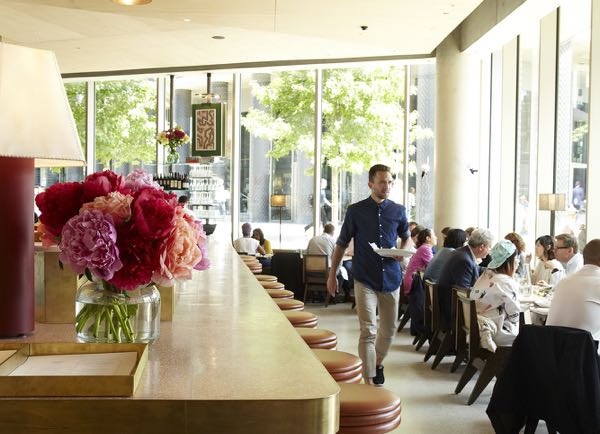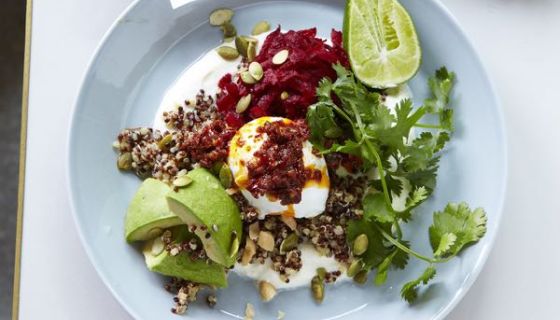Restaurant business buzzwords to have caught my attention recently include ‘elevated casual’, ‘natural wines’ and the ‘Aussie breakfast’.
The first particularly strange combination refers to the style of restaurant many are seeking to open today, somewhere that is comfortable and professional but informal while giving the customer the opportunity to spend well.
The second is a style of wines currently favoured by many young sommeliers although I rather like the comment of one Australian winemaker that these wines are probably ‘easier to make than to drink’.
The Aussie brekkie, as many Australians refer to it, is the latest development in how many Londoners now choose to start the day but it is not, as it stands, quite as geographically precise as it seems.
The first and most obvious manifestation of this change is of course in the style and ubiquity of the coffee we are drinking and here the input has come as much from New Zealand as it has from Australia. Allpress, who can roast up to 20 tons of coffee a week Down Under, have transformed themselves successfully into a more boutique brand in London while Caravan, who started roasting in a tiny basement in Exmouth Market five years ago, are now roasting close to 2 tons a week.
It was the Italians who first converted Australians to coffee and as a result their coffee tends to be a bit darker than many with overtones of chocolate and nuts and served milkier. Their unique contribution is, of course, the flat white, slightly stronger than a cappuccino and with the head of milk removed. Both these factors, the flavour profile and the higher milk content, make an antipodean roasted coffee easier to enjoy with food.
The ingredients of an Aussie brekkie tend to be more savoury than sweet, perhaps a process that started with Australians’ enjoyment of Vegemite, the spread that came to be as much a symbol of the country as the kangaroo. But today, the increasing number of chefs cooking this style of breakfast will incorporate far healthier ingredients into their menus: avocadoes; coconut shaved, or as water in juices, or baked into coconut bread; lots of different healthy fruits; and dozens of eggs. These menus will also be distinguished by cooking techniques that invariably eschew sauces but rely instead on spicier dressings and have been heavily inspired by their neighbours in south-east Asia. As a result, ingredients can move easily from breakfast to brunch and from the lunch to the dinner menus.

These fresher, stronger and healthier ingredients have coincided with an increase around the world in our appetite for this style of eating. And it is this demand that has in turn taken Bill Granger, 45, from his cloudy, but food-obsessed, home in Melbourne to his third London restaurant that he has just opened by St Pancras and King’s Cross stations. En route he has also opened a further five cafes in Tokyo, three in Sydney and one each in Seoul and Honolulu.
The principles of his first café, bills in Darlinghurst, which he opened aged 22 in 1993, were the consequences of brief trips to California and Tokyo after his move to Sydney. ‘Like everyone else I was impressed by the light that reflects off the harbour that seems to make everywhere in that city sparkle. I was struck by the freshness of the ingredients in California and how eating Japanese food leaves one feeling so clean.’
It was important, but far more difficult, to find spaces with a similar feel in London but with a certain amount of artifice he has pulled this off in his cafes in Notting Hill Gate and Clerkenwell. At the former he has installed bright yellow awnings over the front window to give the impression that the sun is always shining while the latter looks over the green in front of a nearby churchyard. This is a view that would not appeal to many restaurateurs’, Granger admitted, ‘but it was a crucial part of what I wanted’. His latest restaurant (pictured below by Petrina Tinslay) boasts tall glass windows on two sides that allow daylight to flood the room at breakfast.

This is important because at this time of day we are at our most introspective in Granger’s view, our heads down as we plan our day or choose to lose ourselves for a short time in a newspaper. But capturing customers at this time of day gives his staff a unique opportunity. ‘Most people have 5 or 6 restaurants that they return to. We have the advantage at breakfast of being able to make an impression that will turn them into regulars, the backbone of any restaurant.’
The irony of establishing his restaurants as destinations for an Aussie brekkie is not lost on Granger. He put his head in his hands as he recalled that his father still has the same breakfast every morning (Weetabix, toast and marmalade and coffee) and how going out for breakfast to a hotel used to be a big treat before so many of them succumbed to the dreaded breakfast buffet.
Now that we eat out so often, breakfast provides an opportunity to inject freshness and vitality into the day. Granger’s fifteen restaurants cook an extraordinary 2.8 million eggs annually (for the best scrambled eggs, he advises, add cream and cook over a high heat in a non stick pan) while his ricotta pancakes are now so popular in Japan that they have become the design for a key ring.
The Aussie brekkie is here to stay.
Granger & Co, www.grangerandco.com
Photos courtesy of Petrina Tinslay.













